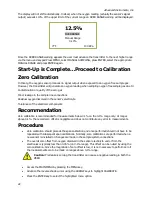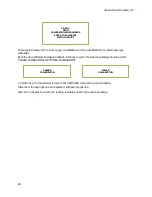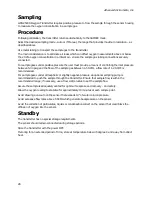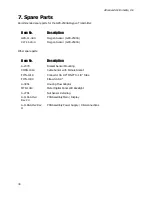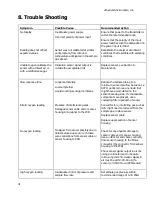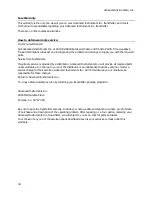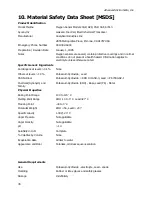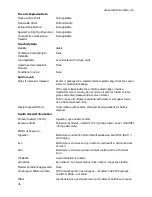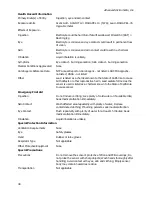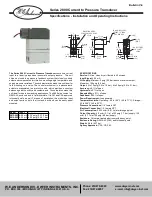
Advanced Instruments, Inc.
Fire and Explosion Data
Flash and Fire Points
Not applicable
Flammable Limits
Not flammable
Extinguishing Method
Not applicable
Special Fire Fighting Procedures Not applicable
Unusual Fire and Explosion
Hazards
Not applicable
Reactivity Data
Stability
Stable
Conditions Contributing to
Instability
None
Incompatibility
Avoid contact with strong acids
Hazardous Decomposition
Products
None
Conditions to Avoid
None
Spill or Leak
Steps if material is released
Sensor is packaged in a sealed protective plastic bag, check the sensor
inside for electrolyte leakage.
If the sensor leaks inside the protective plastic bag or inside a
transmitter sensor housing do not remove it without rubber or latex
gloves and safety glasses and a source of water.
Flush or wipe all surfaces repeatedly with water or wet paper towel.
Use a fresh towel each time.
Waste Disposal Method
In accordance with federal, state and local regulations for battery
disposal
Health Hazard Information
Primary Route(s) of Entry
Ingestion, eye and skin contact
Exposure Limits
Potassium Hydroxide - ACGIH TLV 2 mg/cubic meter; Lead - OSHA PEL
.05 mg/cubic meter
Effects of Exposure -
Ingestion
Electrolyte could be harmful or fatal if swallowed. Oral LD50 (RAT) =
2433 mg/kg
Eye
Electrolyte is corrosive and eye contact could result in permanent loss
of vision.
Skin
Electrolyte is corrosive and skin contact could result in a chemical
burn.
Inhalation
Liquid inhalation is unlikely.
Symptoms
Eye contact - burning sensation; Skin contact - soapy slick feeling.
Medical Conditions Aggravated None
Carcinogenic Reference Data
NTP Annual Report on Carcinogens - not listed; LARC Monographs -
not listed; OSHA - not listed
Other
Lead is listed as a chemical known to the State of California to cause
36

